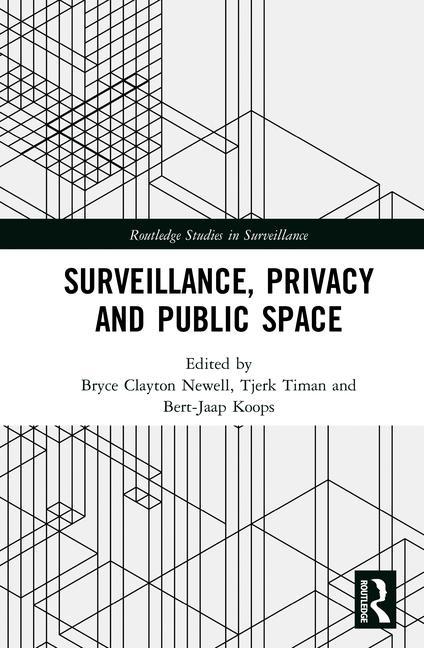Designing Spaces
Modern monitoring and operations center design is a complex, highly collaborative and customized process.

PHOTO COURTESY OF AVANTGUARD MONITORING
A major consideration for AvantGuard Monitoring during the design process were desks that could be raised and lowered at will for operator comfort.

PHOTO COURTESY OF METRODIAL CORP.
No detail is too small when it comes to monitoring and operations center design. MetroDial Corp. implemented these cell phone lockers with built-in chargers to reduce distractions and give operators a private place to put their mobile devices.

PHOTO COURTESY OF EMERGENCY24
EMERgency24 designed its Des Plaines, Ill. operations center with an optional treadmill station that is set at 1.5 MPH so as not to disturb breathing. The company offers a $0.50/hour incentive for monitors to work at the treadmill station.

PHOTO COURTESY OF AFFILIATED MONITORING
Experts say that any successful monitoring center design will include an evaluation of the operator’s needs.

PHOTO COURTESY OF VISTACOM
Lighting preferences are an important consideration for operations centers, ultimately affecting productivity and the overall work environment.





For most monitoring centers, security operations centers (SOCs) and global security operations centers (GSOCs), the process of designing the space requires careful consideration of the organization’s needs, mission, space and culture. It also requires a significant amount of research, many vendor interviews, and a high level of detail.
The core of any successful design starts with understanding the operator role inside and out, according to Dan Gundry CTS, director of national control room sales at Vistacom Inc., Allentown, Pa., a control room integrator. “The design should always take the operator into consideration because any room design should be trying to make them more efficient and help them respond more effectively,” Gundry says. He adds that it is important to focus on the type of monitoring or operations being done. For example, an operations center that deals with global security, employee travel and executive protection may have different design needs from one that focuses on dispatching emergency response operations. “Knowing the core mission will fine-tune the design,” he adds.
Ultimately, when it comes to SOC and monitoring center design, there is no single approach. Everything from flooring to lighting to workstations to layout needs to be tailored to the organization, say industry experts. For example, as more video monitoring is being done, or in particular a growing number of smart or triggered event video monitoring, it has changed the way some operations centers are designing their spaces, says Dean Wheelan CTS, application specialist at Middle Atlantic Products, Legrand AV Division, West Hartford, Conn. This has led to some SOCs reducing the number of displays they need or assigning fewer individuals to that type of monitoring, he says; while other third-party monitoring centers are adding or increasing video monitoring displays to keep up with demand.
About a year ago, AvantGuard Monitoring, Ogden, Utah, completed a remodel and design of its monitoring center (one of two redundant locations) and its administrative headquarters. According to Justin Bailey, president and COO, the focus of the project was to reflect the company’s culture of equality, openness and sharing, by forgoing offices for an open floor plan and putting the operations center on the top floor corner room with windows overlooking both the mountains and lake.
“We recognized as an organization that our support people are the most important people and we really wanted to design a space that allowed everybody to see the daylight, have a great workspace and really focus on the democratization of the space. Our goal was for everyone to feel good about what they do and what they provide,” Bailey said. To maintain the open feel of the space, glass-walled huddle rooms around the floor’s perimeter were designed as collaborative meeting spaces or areas where employees can take calls or get a little extra quiet time, but still allow the light to shine through to the entire floor.
AvantGuard management also wanted operators to be able to customize their space a bit. “Operators don’t have their own individual spaces; when they’re done with their shift, someone else comes in and sits at the desk or chair, so we really thought about how we could make the space customizable and personal,” Bailey says. “That was a major consideration for us.” The company implemented desks that can be raised or lowered by operators throughout their the shift for standing or sitting. Custom shades were installed so operators could adjust the natural light throughout the day for comfort; and a water bottle refill station was placed just outside the room for easy access.
Layout Considerations
Though the number of considerations that go into a monitoring center design or remodel is far too many to discuss in one article, when it comes to designing the space, one of the most fundamental considerations is layout. This was particularly important for United Central Control (UCC), which after being acquired by Lydia Security Monitoring, completed an eight-month long total renovation of its San Antonio, Texas facility with an important objective in mind — doubling the capacity of both its operations center and administrative workstations, says Teresa Gonzalez, president of the company.
“Our space is long but not very wide so it was a challenge to maximize the space for a fresh look and maximum efficiency while doubling capacity, but it now has a much brighter and open feel,” Gonzalez says. UCC accomplished this with smaller workstations, monitor stands that take the double monitors off the table to open up the workspace, and by moving wiring and plugs to table height to free up the space beneath the desk and eliminate accidental unplugs and tangles. A few standing stations were implemented and operators can take turns at these stations throughout the day if they choose.
“We had much higher workstations before and you could barely see the tops of the operators’ heads,” says Carolyn Escamilla, director of operations at UCC. “Now the supervisor has line-of-site to everyone and it’s much easier to see when [an operator] needs assistance.”
When National Monitoring Center (NMC) built out its Lake Forest, Calif. location a few years ago, management wanted a modern design with the best operational layout possible. “We wanted good visibility on each operator so we went with a theater-based layout,” explains Todd Shuff, vice president of operations at the company. “It’s a tiered room that elevates toward the back and the agents all face the lower part of the room with a big video wall.” While management wanted visibility of the entire space, Shuff said another important consideration was a feeling of privacy for the operators as well as reducing as much background noise as possible in the wide open space.
“We wanted to address the acoustical balance within the room,” Shuff says. “We worked with a custom furniture company that designs furniture to absorb the sound rather than bounce the sound, so as operators are talking and communicating the sound is not bouncing around as much as it would with other materials.”
Workstations were designed a little bit higher to give operators a sense of privacy while further reducing distractions and background noise, yet still allowing staff to see the large video wall at the bottom of the room, Shuff says. The video wall was carefully designed to give operators the resources they need to do their job, including what’s going on at the company’s monitoring centers around the globe, a mapping system of various weather events around the world, and even HR or company announcements.
Comforting Details
With an increase in the different technologies and number of networked systems at the typical monitoring center or SOC of today, Wheelan says that cable management is another primary consideration during the design process. “There are more cameras and more network systems rather than individual PC-based systems, and there is more cabling than ever to the workstations,” he says, adding that larger raceways and cable management areas are imperative for a clean, sleek and tangle-free workspace.
Indeed, Baird Larson, vice president and director of technology at EMERgency24, Des Plaines, Ill., says that cable management was important for the entire facility when designing the Des Plaines location. In the monitoring center, computers and wires were purposefully positioned so they wouldn’t be kicked by operators, Larson says.
He adds that the space was designed for communication, comfort and scalability. EMERgency24 positioned the monitoring center in a corner room with natural light and implemented an auditorium style design so supervisors could view all stations from the back, while maintaining an open feel. “We built what we call the tower in the back where we can do quiet training, discussions or a personal emergency call. We also wanted all the employees to be comfortable,” he says.
Comfort and ergonomics are high on the list for almost every central station SDM spoke with. After all, when you have operators occupying the chairs and desks 24/7/365, it becomes a must not only for employee satisfaction but to combat long-term neck, wrist and other health problems.
EMERgency24 built variable control vents at the workstations so operators could control air to their private space. The company custom designed the workstations’ front panels with the company’s logo as a hole-punched design to allow for airflow to the operator as well as the computers and electronics. Workstation screens were positioned for ergonomics while also allowing operators to see the video wall. To give employees more choice, Larson says the company decided to invest in a few standing workstations and even a tread desk — a treadmill workstation that allows the operator to walk at 1.5 MPH so as not to disturb breathing. And when it came time to choose a chair, Larson says the process included a lot of thought and research before ultimately deciding on gently used, higher end, breathable chairs of different sizes. “In terms of comfort, the most important thing is the chair,” he adds.
Eyes & Ears Have It
Many SOCs and monitoring centers are outfitted with carpeting, but Randall Renfroe, president of Allstate Security Industries Inc., Amarillo, Texas, and his team wanted something different for their recent gut renovation which took about six months. “We wanted something that would not only last a long time, be easy to clean and look really nice, but would not produce much sound at all when you walk on it,” Renfroe says. The company decided on a sleek vinyl flooring with a cork underlay for the look, feel and sound (or lack thereof) that they wanted.
Renfroe says that the flooring is one example of the many details it takes to do a complete renovation of a monitoring facility — all while focusing on accuracy, efficiency and speed for the operators. For example, the company ripped out the old lighting and put in all new LED lighting throughout, as well as installed workstations that could be adjusted to the operators desired height and chairs with a myriad of settings. To increase efficiency with employee communication, the organization introduced the application Slack on each workstation and mobile device. The company also had a goal of going beyond redundancy to tertiary backup for its facility, which it accomplished. “It’s something for us to be proud of,” Renfroe says.
When Affiliated Monitoring designed its New Jersey facility, one of the many focuses was working with an acoustical engineer to ensure that both the monitoring and office spaces were as quiet as possible for efficiency and productivity. The effort resulted in the company implementing a number of passive and active noise cancellation considerations to dissipate sound rather than reverberate it, and covered everything from the design of the ceiling and floor to workstations and furniture to the microphone and speaker systems. “It was a complex, multi-year process and it’s not even something you would necessarily realize, but you can sit in the middle of the monitoring floor and have a conversation and no one would hear you,” says Daniel Oppenheim, executive vice president.
Another design consideration for SOCs and monitoring centers that plays a role in comfort (and productivity) is lighting. This consideration varies widely from facility to facility in terms of preference. Gundry of Vistacom says one trend he is seeing in the SOC and monitoring center space is human-centric lighting or HCL — the concept of adjusting lighting levels throughout the day to take the body’s circadian rhythm into consideration for alertness. “Particularly for those long evening hours an operator needs to be alert. The technology itself has been around a while, but it is just now starting to penetrate the core security market,” he says.
When MetroDial Corp. decided to overhaul its lighting, Stuart Lowitt, director of marketing at the Hicksville, N.Y. company, says the team decided on LED to save energy costs and allow for dimmers and more control over lighting for managers and supervisors.
“Everyone seems happier with it and it’s easier on the eyes and on the computer monitors,” says Andrew Lowitt, vice president at the company. In addition to lighting, MetroDial has made a number of recent upgrades to the facility, including modernizing the organization’s racks and reconfiguring the operations center space to make room for a supervisor platform with a standing/sitting workspace. To reduce distractions and give operators their own space, the company installed cell phone lockers with built-in chargers.
Andrew Lowitt also says that the company is currently working on installing digital signage throughout the building for weather, meetings and company announcements. MetroDial has a screen dedicated to weather and news, but wanted to incorporate further content. “We did our research and we found that with these cloud-based systems, we can upload content from anywhere, including our phones,” explains Stuart Lowitt.
A Question of Durability
When it comes to design, “all the details matter,” says Trey Alter, president and CEO of Dynamark Monitoring, Hagerstown, Md. “Of course, there is no right way to do a design. You’ve got to really figure out what your core philosophy is and how you want to care for your team members and that will vary.”
Alter says that Dynamark decided to take a non-traditional route with design and determined that a benching system with rows of tables instead of separate workstations was the best choice for the team environment they desired. The rows of teams are separated by frosted glass to reduce ambient noise while still allowing operators to see the larger video wall at the front of the room. “It has been tremendous for us. It works because we have certain groups handling different things and this allows team members to interact with each other when needed,” Alter says.
More Online
“From Spare Bedroom to State-of-the-Art Monitoring Center”
www.SDMmag.com/spare-bedroom-to-state-of-the-art-monitoring-center
“Primary Considerations and Pitfalls for Security Control Room Design”
www.securitymagazine.com/considerations-and-pitfalls-for-security-control-room-design
Layout aside, Alter says that keeping the focus on quality, durability and who is doing the job is one of the foundations for monitoring center design. “A mistake people make is thinking only about the work being performed rather than the people that will be working and what they need to perform their job and be comfortable. You also need to put as much as you can into it to make it durable and extremely high quality. Team members notice these things,” Alter says.
“It comes down to three things for us,” Alter continues. “Is the space clean, collaborative and comfortable? A clean design and visually appealing space to team members is so important because people want to get up and go to work at a place they are proud of. After that it needs to be collaborative. We like to cluster people together that interact with one another in team environments. And then of course, they have to be comfortable. You can have the best employee in the world but if they hate their desk or are not comfortable in their chair, they are not going to want to come to work in the morning.”
Looking for a reprint of this article?
From high-res PDFs to custom plaques, order your copy today!










